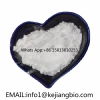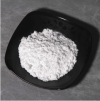





chemical
Purpose 1
Used as pigments, stabilizers, catalysts, etc
Usage 2
Used as an analytical reagent and also in biological staining, organic synthesis, and pharmaceutical industry
Usage Three
This product can be used to produce various lead salts, anti fouling coatings, water quality protection agents, pigment fillers, paint drying agents, fiber dyeing agents, and solvents for heavy metal cyanide processes. It is widely used in industrial production such as pharmaceuticals, pesticides, dyes, coatings, etc. It is also a reagent for determining Chromium trioxide and Molybdenum trioxide in chemical analysis.
Purpose 4
It can produce various lead salts, anti fouling coatings, water quality protection agents, pigment fillers, paint dryers, fiber dyes, and solvents for heavy metal cyanide processes. It is widely used in industrial production such as pharmaceuticals, pesticides, dyes, coatings, etc. It is also a reagent for determining Chromium trioxide and Molybdenum trioxide in chemical analysis.
Preparation method
Method 1
It is obtained by reacting lead oxide with acetic acid. Dissolve lead oxide in 80% hot acetic acid until soaked, filter, add a small amount of acetic acid to the filtrate, and evaporate to a relative density of 1.40. Cool, filter and dry to obtain Lead(II) acetate. The general purity of industrial Lead(II) acetate can reach more than 98%. After purification, 1% acetic acid solution can be used for recrystallization, or trihydrate Lead(II) acetate can be dissolved in water and hydrogen sulfide is introduced to precipitate Lead(II) sulfide and other impurities together. After filtration, fluorescent gallium reagent (complexing agent of Co, Al, Cu, etc.) is added to the filtrate, a small amount of activated carbon is added, and EDTA sodium salt is added for treatment to obtain extremely pure reagent grade products.